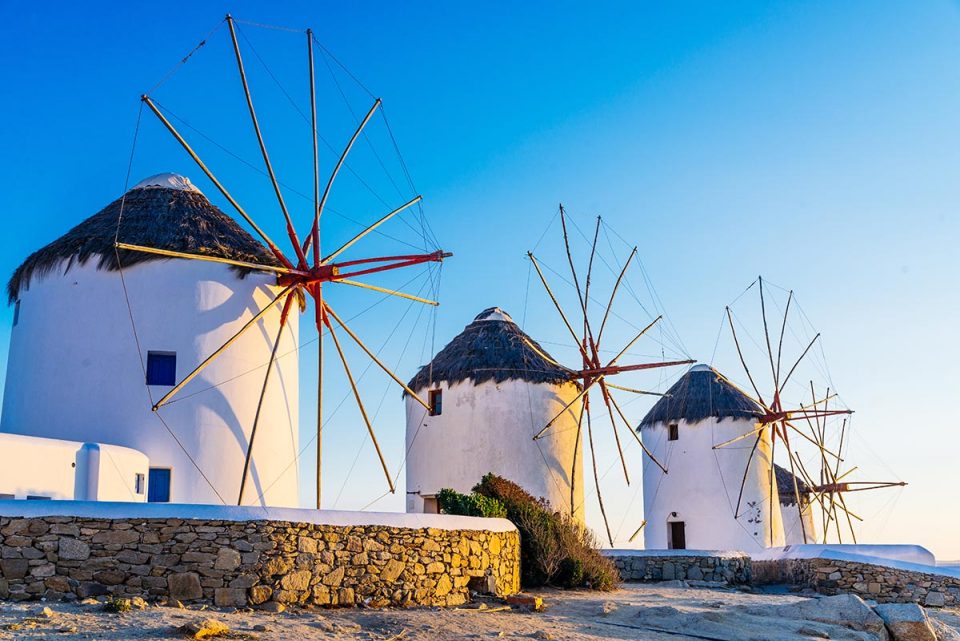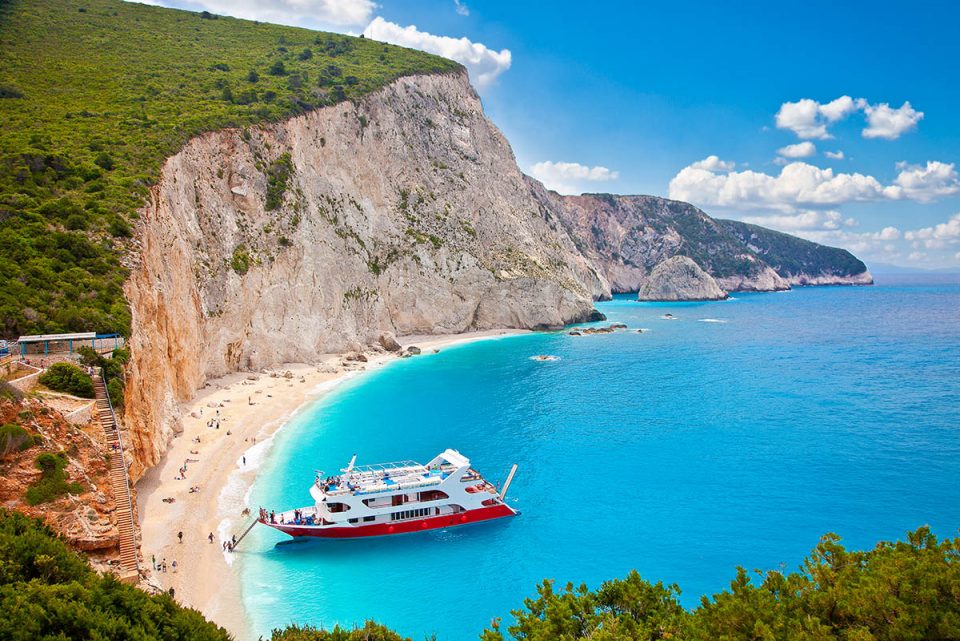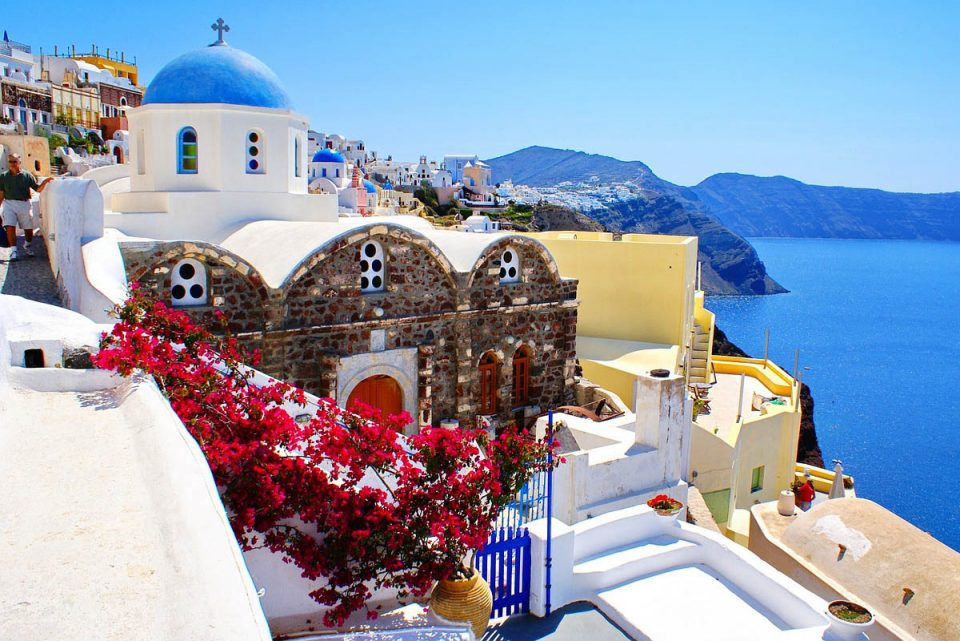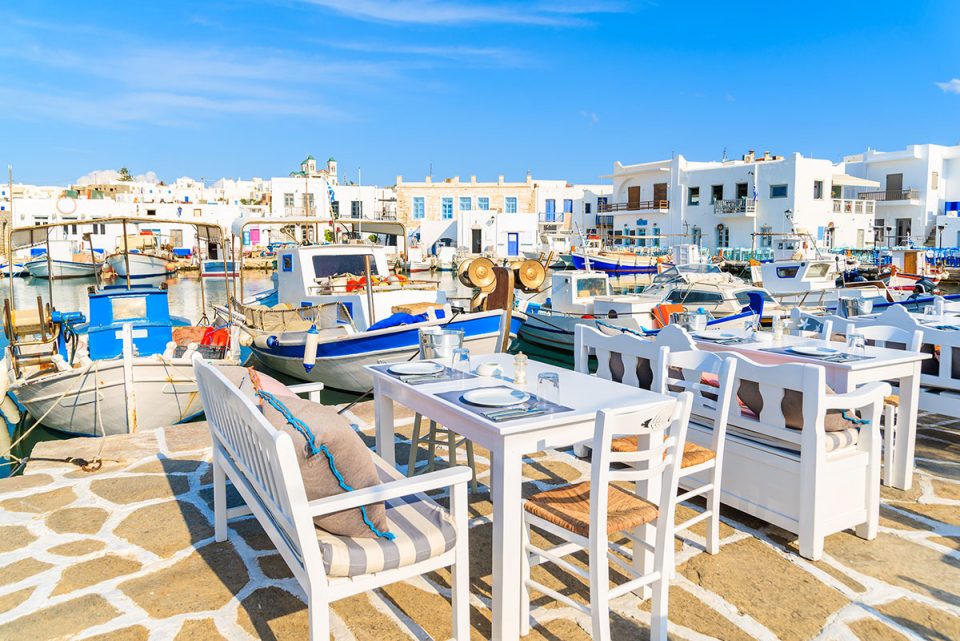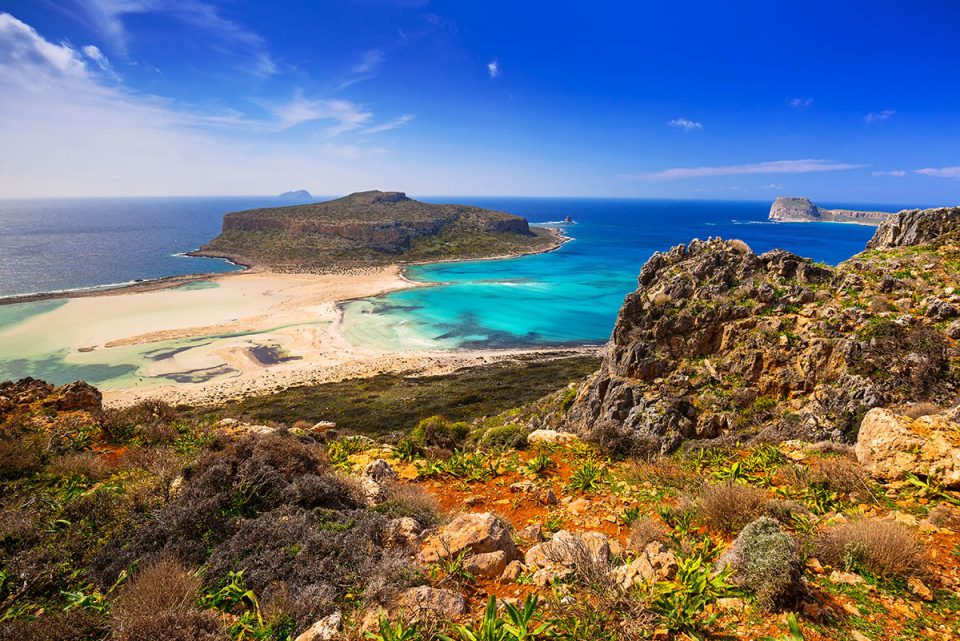Tinos, also known as the island of the Megalochari (Blessed Virgin Mary, the All-Gracious), is located between the islands of Andros and Mykonos. The same name is used for the island’s capital town and harbour. Tinos was named after king Tinos, the first settler of the island during the prehistoric ages. Tinos combines mountain and sea landscapes and, because of the strong prevalent meltemi (etesian) winds, it’s also called “Aeolus’ island”.
The majestic Church of Evangelistria (the Annunciation of the Blessed Virgin Mary) and its bell tower are the first things visitors see during their approach to the island.
One can find beautiful Aegean beaches fit for every taste in Tinos: secluded and quiet or cosmopolitan ones with beach bars and sea sports. Indicatively, one would mention the Agios Phokas beach, the largest organised beach that’s very close to Chora (the island’s capital), the small Agios Markos beach featuring pebbles and crystal cool water, the Kionia beach featuring pebbles, pines and tourist infrastructure, Agios Ioannis Porto, one of the best known beaches in Tinos around which restaurants, hotels and a picturesque little harbour are scattered, as well as the greenish blue beach of Pahia Ammos with the thick gold sand and a dune that reminds of a desert.
Lodging in Tinos is an easy issue to solve, since visitors can choose from a variety of luxurious hotels, rooms and apartments-to-let and studios or villas.
As far as sightseeing on the island is concerned, one must stress out the Church of Megalochari with its eponymous, miracle-working icon (according to Christian tradition), the feast of which is in fact on March 25th (Annunciation of Our Lady the Blessed Virgin Mary); it is, however, the most popular destination for the festivities of August 15th (Assumption of Our Lady the Blessed Virgin Mary).
Our Lady of Tinos has emerged as a second Jerusalem in the Eastern Orthodox Church, with hundreds of thousands of devoted believers flocking from around the world to pray on their knees. The church of Zoodochos Pigi (Our Lady, Life-giving Spring), with its triple parallel domed arcades, is situated right under the church of Evangelistria: the miracle-working icon was found right there, miraculously, having presented itself in a vision experienced by a nun named Pelagia.
A number of interesting museums and exhibitions by the Panhellenic Holy Institution of Our Lady of Tinos featuring momentous exhibits are housed in the building complex of the church.
Furthermore, it’s worth visiting: the Archaeological Museum on Megalocharis avenue, as well as a multitude of folklore etc museums which are scattered around the island; the Agia Pelagia Monastery in Kechrovouni (its religious and historical value is immense, since Saint Pelagia, whose vision led to discovering the miracle- working icon on January 30th, 1823, was a nun there); the Monastery of the Holy Heart of Jesus in Exomvourgo; the “Elli” cruiser monument; the Cultural Foundation of Tinos; Kionia village, where the sanctuary of Poseidon and Amphitrite is located. In the village of Pyrgos, outside Chora, one can visit the first marble museum in Greece; as well as the house of Tinos-born famous sculptor Yannoulis Chalepas, currently converted into a museum.
In addition to the sights, the countryside of Tinos, in which the steep mountain slopes have been turned into arable land by creating “steps” into the ground is also interesting; the staggered form of the land around the villages of Tinos is visible from every point on the island.
Along the old road to Megalochari, a stroll can be combined with shopping from any of the numerous shops full of icons, traditional handmade embroideries, jewels, komboloi beads and traditional candies.
Apart from the Chora of Tinos, the rest of the island’s picturesque villages, namely Kalloni, Loutra, Krokos, Volax, as well as Platia, Venardatos, Marlas and Mamados (in which one sees some important archaeological institutions) are worth visiting.









